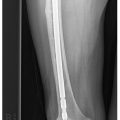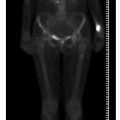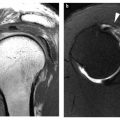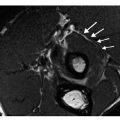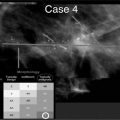Fig. 1 a, b
Sites and distribution of common arthritides of the hand (a) and foot (b). The more common sites are encircled with bold lines and the less common sites with lighter lines. Note the periosteal reaction (new bone formation) classically identified in reactive arthritis (Reiter’s arthropathy). Note also the potential for „sausage digit” distribution in psoriatic arthritis. When joints are encircled in isolation, the distribution is random and may be isolated to any joint (Courtesy of Lee F. Rogers, MD)
In recent years, there has been a significant change in the management of the inflammatory arthritides, with the advent of powerful and effective biological therapies. The use of these drugs has led to a dramatic improvement in patient lifestyle and morbidity from this disease group, which previously resulted in relentless joint destruction. To achieve these outcomes, drug therapy must be initiated before irreversible joint damage has occurred. This requires early diagnosis, often before conventional radio – graphs show manifestations of the disease. This has led to increasing use of more advanced imaging techniques, principally MRI and ultrasound, to diagnose and manage these conditions. Intense research activity is currently centered on the use of these techniques to detect disease progression and remission; in the future they might become important tools in therapeutic decision-making.
Rheumatold Arthritis
Rheumatoid arthritis is characterized by proliferative, hypervascularized synovitis, resulting in bone erosion, cartilage damage, joint destruction and long-term disability. Diagnosis is based on clinical, laboratory and radio – graphic findings. The disease typically begins in the peripheral joints, usually the metacarpophalangeal (MCP) and proximal interphalangeal (PIP) joints, the wrists, and the metatarsophalangeal (MTP) joints, with a predominantly symmetrical distribution. As the disease progresses, it affects more proximal joints.
The initial radiographic manifestations are soft tissue swelling and periarticular osteoporosis. These features represent indirect evidence of synovial inflammation, and their assessment is quite subjective. More specific are marginal erosions of bone that occur at the so-called bare areas between the peripheral edge of the articular cartilage and the insertion of the joint capsule. In the early stages of the disease, these may occur at the radial aspect of the second and third metacarpal heads, at the ulnar styloid process, and at the metatarsal heads, especially at the lateral aspect of the fifth metatarsal head. This is followed by diffuse narrowing of PIP, MCP, MTP and wrist joints. Unfortunately, these features represent late consequences of synovitis. Characteristically, the distal interphalangeal (DIP) joints are spared. There is no osseous proliferation and no involvement of entheses.
The development of new, powerful, but expensive therapeutic agents for rheumatoid arthritis, such as the antitumor necrosis factor agents, has created new demands on radiologists to identify patients with aggressive rheumatoid arthritis at an early stage. MRI and sonography can be useful tools in evaluating these patients. Sonography is a quick and inexpensive way to detect synovitis and tenosynovitis, whereas MRI is a more global way to evaluate the small synovial joints of the appendicular skeleton, and is more sensitive than radiography in detecting synovitis, bone marrow edema and bone erosions. MRI is also an excellent means to assess spinal complications of rheumatoid arthritis, in particular subluxation at the atlantoaxial joint. Both MRI and sonography may be used to demonstrate the soft tissue changes of rheumatoid arthritis, such as tenosynovitis and rheumatoid nodules.
Seronegative Spondyloarthropathies
The seronegative spondyloarthropathies are represented by ankylosing spondylitis, psoriatic arthritis, reactive arthritis (Reiter’s syndrome), colitic arthritis and undifferentiated spondyloarthropathies. Affected persons usually have a negative serum rheumatoid factor, but a significant percentage has the HLA-B27 antigen. These diseases frequently cause symptoms in the axial skeleton, but the appendicular skeleton may also be affected, in isolation or in combination. Radiographically, these diseases differ from rheumatoid arthritis by the absence or mild nature of periarticular osteoporosis, the involvement of entheses with erosions and with new bone formation, and the asymmetrical involvement of the peripheral skeleton.
Ankylosing Spondylitis
Involvement in ankylosing spondylitis starts and is most typical in the axial skeleton (spine and sacroiliac joints), but the appendicular skeleton may also be involved, especially the feet. Radiography may demonstrate arthritis and enthesitis with erosive changes and osseous proliferation. MRI is well suited for demonstrating the early spinal and sacroiliac changes of ankylosing spondylitis. High T2 signal change (edema like) seen at the corners of vertebral bodies and in the subchondral bone of the sacroiliac joints is a typical feature. Later, erosive change at the sacroiliac joints and ultimately fusion in the sacroiliac joints and spine may be seen. Costovertebral disease is a common finding on MRI. Sites of previous inflammatory change may be evident as fatty change within the bone marrow, typically seen at the corners of the vertebral bodies. At an early stage of the disease, sonography and MRI may be useful in showing peripheral inflammatory changes at the entheses, including extra-articular sites such as the calcaneal attachments of the Achilles tendon and plantar fascia. While sonography will show synovitis and erosive change along with enthesophytes, MRI will also demonstrate edema-like change within the bone marrow.
Psoriatic Arthritis
The extent of arthritis does not correlate with the degree of psoriatic skin disease and, in some cases, the skin manifestations may follow the arthritis by several years or may never develop. Psoriatic arthritis tends to involve the small joints of the hands and feet. The process is characteristically asymmetrical. Involvement of the DIP joints of the hands and toes, usually in association with psoriatic changes of the nails, or involvement of one entire digit (MCP + PIP + DIP, „sausage digit”), is very suggestive of psoriatic arthritis. This arthritis is not necessarily associated with periarticular osteoporosis, and erosions are often small. In contrast, extensive osseous proliferation at entheses and periostitis are common.
At an early stage, sonography and MRI may show synovitis, tenosynovitis and bursitis that are similar to those seen in rheumatoid arthritis. In addition, MRI may demonstrate extensive signal abnormality in the bone marrow and soft tissues far beyond the joint capsule, related to enthesitis. These features may be useful in patients with inflammatory polyarthralgia of the hands for differentiating rheumatoid arthritis from psoriatic arthritis. Sacroiliitis is common and resembles that seen in ankylosing spondylitis, except that it is more often asymmetrical. Spinal involvement is less common, and the paravertebral ossification that occurs in psoriatic spondylitis is typically broad, coarse and asymmetrical in contrast to the symmetrical syndesmophytes of ankylosing spondylitis.
Reactive Arthritis (Reiter’s Syndrome)
Reactive arthritis is characterized by urethritis, conjunctivitis and mucocutaneous lesions in the oropharynx, tongue, glans penis and skin, as well as arthritis. In general, the radiographic manifestations are similar to those of psoriatic arthritis, except that the axial skeleton is not as commonly involved, and changes in the upper extremities are exceptional. The most prominent involvement is in the lower extremities, particularly the feet.
Stay updated, free articles. Join our Telegram channel

Full access? Get Clinical Tree


